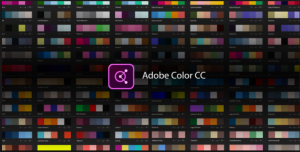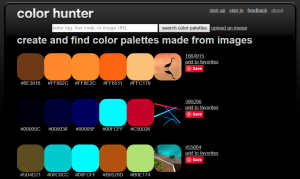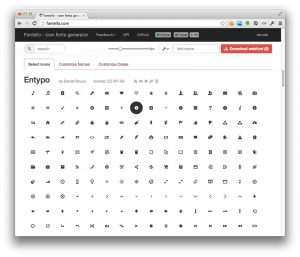
Major security concerns or risks invovled in HTML5 development
Security Risks in HTML5
HTML5 has been a revolutionary change in the field of web development making websites more visually attractive and interactive. It has been the perfect answer to the growing demand for multi-device user needs. It has found great acceptance in the developer’s community with most businesses opting for HTML5 powered websites. One of the greatest advantages of HTML5 is the fact that it has brought in a native app life feeling to websites bringing most of the features and functionalities to the client instead of the server as had been the norm for years.
 But with all these advantages HTML5 also has its own drawbacks. Security is one such issue as vulnerability have been unearthed that pose serious risks to a web and mobile development. It is vulnerable to stealth and silent attacks often compromising the privacy of the users. The vulnerability is more in the case of smartphones and tablets where the concept of traditional browser-based browsing isn’t popular. HTML5 powered apps can pose serious dangers to the client as well as the server. Here we shall discuss some of these risks that every developer should be aware of.
But with all these advantages HTML5 also has its own drawbacks. Security is one such issue as vulnerability have been unearthed that pose serious risks to a web and mobile development. It is vulnerable to stealth and silent attacks often compromising the privacy of the users. The vulnerability is more in the case of smartphones and tablets where the concept of traditional browser-based browsing isn’t popular. HTML5 powered apps can pose serious dangers to the client as well as the server. Here we shall discuss some of these risks that every developer should be aware of.
Risks In Data Storage
One of the biggest risks that HTML5 poses is to do with the enhanced data storage capabilities. We have already mentioned that HTML5 introduces a new system where most of the data is stored on the client’s side. Developers term it as one of the biggest beauties as well as dangers of the new markup language. Earlier versions of HTML could only store session information or login information in the form of cookies. HTML5, on the other hand, has introduced sessionStorage, localStorage, and client-side databases that allow a vast amount of data to be stored on the client’s side that provides easier access of information even in the offline mode. This feature allows websites to offer uninterrupted experience to the users even when connection snaps for a short time span. This opens a window of opportunity for an attacker as the data can easily be retrieved and manipulate and can be uploaded back to the server to attack others. Along with this, there are also many risks when it comes to temporary storage through the issues isn’t as grave as permanent storage that we have so far discussed.
Offering Access To Camera, GPS, and Microphone
In a bid to make websites more interactive many web developers have extensively used imaging, location, and voice-based functionalities while developing websites. Many web-based applications require the users to grant access to their cameras, microphones and GPS systems. For example, there are sites that require users to authenticate their identity using an image or their voice. The Geo-location feature in HTML5 offers highly customized search results based on a user’s location. Most of the users are likely to grant access to such services without considering the security and privacy implications. An attacker can easily make use of these devices on an HTML5 powered website and compromise and peek into the activities and location of the user with them even being aware of it. What’s worrying is the fact that on most occasions the user won’t even be aware of the fact that his or her security has been compromised.
Third Party Code
Another security concern for developers in HTML5 comes from the use of third-party codes. HTML5 is known to offer dynamism to web development with the use of third-party codes and this opens potential vulnerabilities for the website. In the previous versions of the markup language JavaScript had limited usage in requesting resourced from the domain. For instance, the previous versions of HTML didn’t allow pages from one domain to pass or access data in pages from another domain. 
All these security vulnerabilities do have their own remedies and it depends on the skills of the developers how he or she can develop a website negotiating these risks. HTML5 presents a wonderful opportunity for a developer to expand into the new horizons of web development and developers are making use of this technology to take web development to a new level and offered more opportunity to the businesses with their users and vice versa.



 Comic strips are being released on almost all topics, even though politics is the major subject. Here as part of this post, we have collected some interesting real-life comic strips related to web design and technology. Most of these comics are outstanding and creative works which conveys a tough thing or scenario in an interesting manner. All these webcomic strips are bookmarked with the original URL. Each of these comics has its own copyright terms of usage. If you’d like to use one of these images in your projects, please read their copyright terms of usage or contact the copyright owner for the right permission.
Comic strips are being released on almost all topics, even though politics is the major subject. Here as part of this post, we have collected some interesting real-life comic strips related to web design and technology. Most of these comics are outstanding and creative works which conveys a tough thing or scenario in an interesting manner. All these webcomic strips are bookmarked with the original URL. Each of these comics has its own copyright terms of usage. If you’d like to use one of these images in your projects, please read their copyright terms of usage or contact the copyright owner for the right permission. The Life and Death of Web Design
The Life and Death of Web Design
 In order to stand firm and to make their business base stronger, business start-ups should definitely have a quality website in place. Online identity is equally important to companies and individual entrepreneurs who are looking to make their ideas famous and want to be heard. New business strategies define their success pace, but the promotional package starts with the website. Online marketing, social media, etc won’t work without a good website.
In order to stand firm and to make their business base stronger, business start-ups should definitely have a quality website in place. Online identity is equally important to companies and individual entrepreneurs who are looking to make their ideas famous and want to be heard. New business strategies define their success pace, but the promotional package starts with the website. Online marketing, social media, etc won’t work without a good website. 2. Creativity in the Graphics
2. Creativity in the Graphics

 True, advertising is an effective way of expanding your customers reach and take your business ahead. But, overloading your website with a variety of third-party ads can negatively influence the perspective of your customers.
True, advertising is an effective way of expanding your customers reach and take your business ahead. But, overloading your website with a variety of third-party ads can negatively influence the perspective of your customers. There is a tendency among web designers to take creative elements to another level by creating different designs for each and every page. This is something that really confuses your visitors, something which is utterly annoying. No matter how attractive and over-the-top website you have designed, if the overall look and feel are not in-tune with each other, users cannot establish any link with the website and feel less committed towards it.
There is a tendency among web designers to take creative elements to another level by creating different designs for each and every page. This is something that really confuses your visitors, something which is utterly annoying. No matter how attractive and over-the-top website you have designed, if the overall look and feel are not in-tune with each other, users cannot establish any link with the website and feel less committed towards it.
 What are Whitespaces?
What are Whitespaces? 2. Whitespaces add an emotional touch to your design
2. Whitespaces add an emotional touch to your design 5. Logical grouping becomes feasible with the use of whitespaces
5. Logical grouping becomes feasible with the use of whitespaces 7. Maintaining tidiness throughout the web pages is possible with whitespaces
7. Maintaining tidiness throughout the web pages is possible with whitespaces









 Yeoman 1.0 – Modern workflows for modern web apps
Yeoman 1.0 – Modern workflows for modern web apps BootMetro
BootMetro Fontello
Fontello
 Adobe Photoshop Express
Adobe Photoshop Express Google Analytics
Google Analytics

 Reviewing the app’s overall UX feedback
Reviewing the app’s overall UX feedback Conclusion
Conclusion
 While CSS3 allows us to rotate letters, it is quite complicated to arrange each letter along a curved path. Arctext.js is a jQuery plugin that let’s you do exactly that. Based on Lettering.js, it calculates the right rotation of each letter and distributes the letters equally across the imaginary arc of the given radius.
While CSS3 allows us to rotate letters, it is quite complicated to arrange each letter along a curved path. Arctext.js is a jQuery plugin that let’s you do exactly that. Based on Lettering.js, it calculates the right rotation of each letter and distributes the letters equally across the imaginary arc of the given radius. Joyride is extremely flexible and lets you take control of how people interact with your tour. We programmed it to be cross-browser compatible with modern browsers and even used some fancy CSS to avoid images. Now let’s see just how easy it is to take your first ride without getting the fuzz involved.
Joyride is extremely flexible and lets you take control of how people interact with your tour. We programmed it to be cross-browser compatible with modern browsers and even used some fancy CSS to avoid images. Now let’s see just how easy it is to take your first ride without getting the fuzz involved. ResponsiveSlides.js is a tiny jQuery plugin that creates a responsive slider using elements inside a container. It has been used on sites like Microsoft’s Build 2012 and Gridset App. ResponsiveSLides.js works with a wide range of browsers including all IE versions from IE6 and up. It also adds CSS max-width support for IE6 and other browsers that don’t natively support it. The only dependency is jQuery (1.6 and up supported) and that all the images are the same size.
ResponsiveSlides.js is a tiny jQuery plugin that creates a responsive slider using elements inside a container. It has been used on sites like Microsoft’s Build 2012 and Gridset App. ResponsiveSLides.js works with a wide range of browsers including all IE versions from IE6 and up. It also adds CSS max-width support for IE6 and other browsers that don’t natively support it. The only dependency is jQuery (1.6 and up supported) and that all the images are the same size. The No Hassle jQuery Colorpicker which is lightweight and easily customizable.
The No Hassle jQuery Colorpicker which is lightweight and easily customizable.